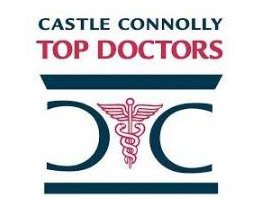Spondylolisthesis occurs when one of the vertebrae in the spine slips forward in relation to the one below. Spondylolisthesis is more common in the lower back, but it may also occur in the cervical spine around the neck region.
Example of Spondylolisthesis

What causes spondylolisthesis?
Spondylolisthesis may be:
- Caused by degenerative conditions like osteoarthritis or osteoporosis
- The result of injuries or accidents (rare)
- Related to some other disease, such as cancer or tuberculosis (very rare)
Types of spondylolisthesis
Spondylolisthesis has been grouped by doctors into five different types:
- Dysplastic, which occurs at birth and is very rare.
- Isthmic, which is the most common and usually first happens between the ages of 6 and 16.
- Degenerative, which occurs in older adults.
- Traumatic, which is the result of an injury or accident.
- Pathological, which is associated with cancer or other diseases.
What you should know about spondylolisthesis
- There is a theory that spondylolisthesis may have a genetic link.
- About 5% of the U.S. population has isthmic spondylolisthesis.
- Isthmic spondylolisthesis does not necessarily cause symptoms or pain.
- In children, spondylolisthesis usually occurs in the lower back

(between L5 and S1).
- Spondylolisthesis is graded to describe how severe it is. The grades relate to how far the vertebra on top has slipped off the vertebra on the bottom. There are four grades, with Grade 4 the most and Grade 1 the least severe.
- If the vertebra does more than slip and falls completely off the vertebra beneath it, that condition is called spondyloptosis or 100% spondylolisthesis.
Symptoms of spondylolisthesis
Symptoms vary depending on how severe the condition is, where it is located and what type it is. Commonly reported symptoms include:
- Back pain
- Stiffening of the lower back and tightening of the hamstrings
- Changes in posture
- Difficulty walking
- Pain in the thighs or buttocks
- Tenderness around the area of the disc
- Changes in sensation in the legs (tingling, cold, lack of sensation, “pins and needles”)
- Weakness
- Pain that radiates down the legs
- Occasional shocks or shooting pains in buttocks and legs
- Difficulty standing or sitting
- Coughing or sneezing that may intensify pain
People with spondylolisthesis may find that their symptoms are worse when they are particularly active.
Diagnosing spondylolisthesis
University Spine Center has experience and expertise in diagnosing spondylolisthesis. After a thorough physical examination and medical history, you may undergo specific tests to determine your condition. This might include:
- Certain exercises or movements (such as raising a leg)
- X-ray
- CT or MRI scan
Treating spondylolisthesis
Since there are different types of spondylolisthesis and different degrees of severity affecting patients of all ages, the treatment of spondylolisthesis is very individualized. University Spine Center will work with you to determine the most appropriate treatment options for you.
In mild cases, exercise, lifestyle modification and sometimes pain management are all that is required. Some patients require a back brace, at least temporarily. When this does not provide relief, surgical treatments may be considered. University Spine Center will be able to discuss the details of the latest therapeutic options, including surgical interventions.






